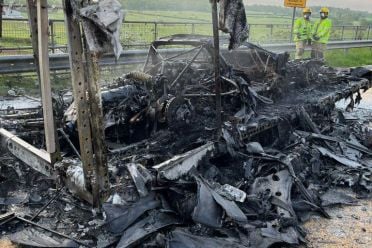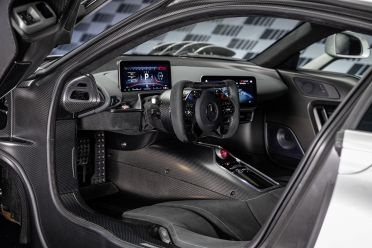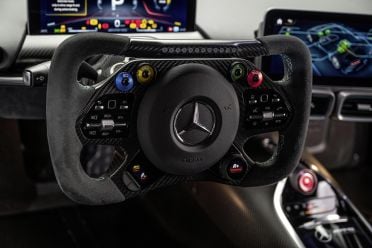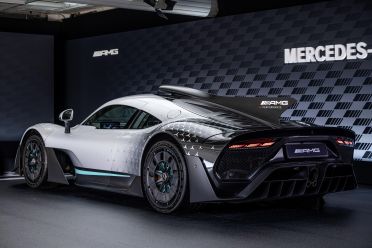The Mercedes-AMG One had a long and tortured birth, as Affalterbach and Brackley’s finest engineers struggled to make Lewis Hamilton’s race engine play nice on the road.
Things haven’t become easier since deliveries began, apparently.
The car’s launch was plagued by technical gremlins, as evidenced by Chris Harris’ experience on Top Gear, and now The Sun is reporting an AMG One has burned itself to the ground while being transported on a truck.
Uh ohhh.
— Drew (@aKellyBrand) May 19, 2023
Very little info but apparently an AMG One caught on fire while on a tow truck 😩 pic.twitter.com/hdIg1IvQl2
Given the car wasn’t believed to be running when it caught fire, it’s possible the car’s lithium-ion battery pack was the culprit.
Although the images show just a frame and some ashes, Mercedes-Benz confirmed to The Sun it’s investigating the fire.
“We are aware of this incident involving a car that was being transported in a closed trailer as part of its assembly process,” the brand told The Sun.
“Fortunately, as far as we are aware, nobody was injured.
“At this point in time, we do not know what caused the fire and, if needed, we will support the investigation of the insurance company.”
Here are some key figures for the Mercedes-AMG One:
- The One pumps out 782kW of power
- That output is from four electric motors (450kW) and a 1.6-litre turbocharged hybrid V6 (422kW)
- One of those motors is an F1-style MGU-K mounted to the crankshaft (120kW)
- Two of those motors are mounted to the front axle (120kW each, 240kW combined)
- One of those motors is mounted to the turbocharger to slash lag (90kW)
- Top speed is 352km/h (electrically limited)
- Electric range from the 8.4kWh battery is 18km
Managing those outputs is a hydraulic seven-speed automated manual transmission, which can be controlled with paddles mounted behind the wheel.
With a claimed kerb weight of 1695kg, the 100km/h sprint takes a claimed 2.9 seconds, the 200km/h sprint takes 7.0 seconds, and the 300km/h sprint flies by in 15.6 seconds.
The One is built around a carbon-fibre monocoque chassis, while the rear suspension is mounted directly to the powertrain as is the case in Formula 1 – or a Ferrari F50, another road car with its origins firmly in the F1 paddock.









